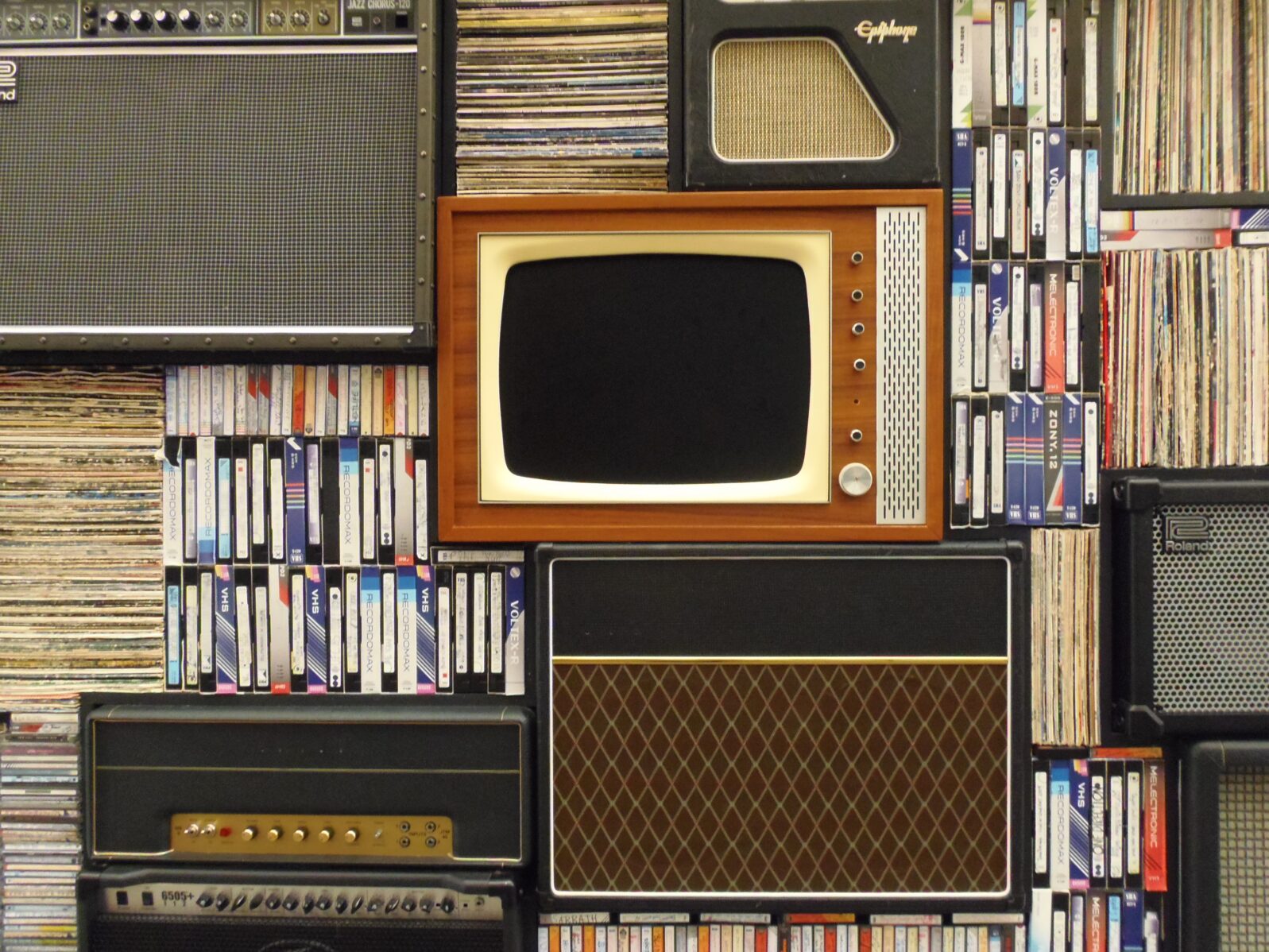Science Confronts Credibility Issues?
Not to worry, prestigious researchers blame them on social media trolls and botsAnd another thing: The researchers phoned the Seventies and asked them to please come back. Soon.
 Seriously, that’s the impression I get from reading a paper in PNAS, stemming from the National Academy of Sciences’ Arthur M. Sackler Colloquium November 2017:
Seriously, that’s the impression I get from reading a paper in PNAS, stemming from the National Academy of Sciences’ Arthur M. Sackler Colloquium November 2017:
Here we argue that in the current political and media environment faulty communication is no longer the core of the problem. Distrust in the scientific enterprise and misperceptions of scientific knowledge increasingly stem less from problems of communication and more from the widespread dissemination of misleading and biased information. We describe the profound structural shifts in the media environment that have occurred in recent decades and their connection to public policy decisions and technological changes. We explain how these shifts have enabled unscrupulous actors with ulterior motives increasingly to circulate fake news, misinformation, and disinformation with the help of trolls, bots, and respondent-driven algorithms. Shanto Iyengar and Douglas S. Massey, “Scientific communication in a post-truth society” at Proceedings of the National Academy of Sciences
Stanford political scientist Shanto Iyengar and Princeton sociologist Douglas S. Massey tell us that “Although trust in science has remained fairly steady over time, as of 2016 only 21% of US adults had “a great deal of confidence that scientists would act in the best interests of the public.” They finger hot-button issues such as evolution and climate change as culprits. They don’t discuss whether publicity around troubled areas such as nutrition and cancer research has eroded trust.
Iyengar and Massey (hereafter I & M) are convinced, in any event, that the revolution in media over the last three decades means that the world is sinking into abject falsehood. In the 1970s, as they relate, media were controlled by a few players: “really only a handful of newspapers, magazines, and television broadcasts.” National and international news was dominated by wire services like Associated Press (AP) and United Press International (UPI):
In addition to the small number of sources, broadcast news was regulated by the Federal Communications Commission (FCC), which required broadcasters to reserve a small share of airtime to cover matters of public interest; under the FCC’s “fairness doctrine” they had to do so in a manner that was honest, equitable, and balanced. Consequently, the major broadcasters all presented much the same information to the public.
I & M make quite clear that they wish such a tidy arrangement prevailed today.
Having been in news all my life, I remember it all too well. A few people were gatekeepers who decided what was news and everyone else was shouting into a void. As I wrote earlier this year,
Back in the 60s, if the media decided to bury something, it usually stayed buried. If they decided to push something, it got pushed. How many people do you think knew, during that era, that John Kennedy and his brother Robert were both sexually intimate with screen goddess Marilyn Monroe? The story was buried by the few people with access to it, possibly to protect the “Camelot” legacy that quickly arose after John’s tragic assassination in 1963.
Maybe it didn’t matter. But most people today are freer to decide that for themselves.
I & M mournfully recount the revolution, beginning with the advent of cable television and talk radio and the elimination of the Fairness Doctrine (1987) which, in their view, “opened the door to the dissemination of ideologically biased content.”
They seem to think that ideologically based content was unknown before. As a Canadian, I was well aware of the ideological bias of American content because I had routine access to Canadian media for comparison. Most Americans, however, were not aware of the ideological biases because they had no alternatives. Most media complied with the Fairness Doctrine by avoiding challenges.
All that changed during the Eighties and Nineties, which saw the advent of CNN (1980), Fox (1986), CNBC (1989), Bloomberg (1990), and MSNBC (1996). The much broader ranger of broadcasters tracked public interest. But the real change came when the internet enabled almost anyone to be a broadcaster. One major change was the increase in the number of conservative-leaning sites, which clearly bothers I & M (more on that in a moment). But to the extent that the conservative outlets are self-supporting, the most reasonable explanation is prior unmet demand.
 I & M worry a good deal about trolls and bots. To listen to them, one would think that the scourge of “false and misleading stories” had never afflicted the world before. The internet has enabled rumors to be digitized and studied but they have been with us forever. One thinks of sayings like “Rumor grows as it goes. (Virgil. 70 BC–19 BC) and “Nothing is swifter than rumor.” (Horace, 65 BC– 8 BC). But these classical authors were latecomers to the writing of proverbs about rumor. The earliest such sayings doubtless predate writing.
I & M worry a good deal about trolls and bots. To listen to them, one would think that the scourge of “false and misleading stories” had never afflicted the world before. The internet has enabled rumors to be digitized and studied but they have been with us forever. One thinks of sayings like “Rumor grows as it goes. (Virgil. 70 BC–19 BC) and “Nothing is swifter than rumor.” (Horace, 65 BC– 8 BC). But these classical authors were latecomers to the writing of proverbs about rumor. The earliest such sayings doubtless predate writing.
Our authors press on: “Social media firms make money by presenting targeted advertising to users, and the job of these algorithms is to generate attractive ‘clickbait,’ so that users succumb to clicking through to additional content.” Yes indeed; social media are an online version of a supermarket—everything but the calories. But I & M are worried: “Increasingly these routines rely on machine learning to automate the process and push users into a vortex of ever more extreme views.”
Of course, that’s a cause for concern, at least in principle. But the very nature of the internet discourages mass gatherings like the Nuremberg Rallies, which were precursors to World War II. It’s an open question whether mass politically sponsored violence is more likely or less likely in an age when anyone, anywhere can be a dreadful troll without ever taking the risk of leaving his den.
I & M know who to blame for the fact that social media has not led to increased trust in science: “While scientists prefer to remain above partisan politics, deliberate efforts to undermine trust in science unfortunately come predominantly from the right of the political spectrum.” They are mistaken. In fact, had they been in the habit of taking to Twitter to express their frustrations, they would be part of the very fake news stream they deplore.
Trust in science is undermined from a number of directions. For example, one researcher who came to doubt that chemical imbalances in the brain cause depression soon discovered that the scientifically questioned doctrine was a moral imperative for progressives:
In areas where left-wing opinions contradict scientific evidence, there’s an unfortunate tendency to suggest that such scientific research is morally problematic. This speaks to a common trope on the left: their views aren’t simply accurate, but moral. Though those on the left are quick to point to right-wing scientific illiteracy, they’re often steadfast in their refusal to recognize their own dogma.
She also notes,
Some other antiscientific views are surprisingly politically bipartisan. Skepticism about the value of vaccines and the belief that genetically modified foods are harmful—both views strongly rejected by scientists—are equally common across the political spectrum. Olivia Goldhill, “The left is also guilty of unscientific dogma” at Quartz
Mistrust is actually a level playing field. In 2006, science journalist Chris Mooney published The Republican War on Science. But in 2012, two other science journalists Alex B. Berezow and Hank Campbell published Science Left Behind, in which they argued that “if it is true that conservatives have declared a war on science, then progressives have declared Armageddon.” In 2013 Michael Shermer pegged the progressive approach to some environment issues as a liberal war on science (Scientific American). Campbell and Berezow likewise wrote in New Scientist (2013), “Conservatives rightly get a bad rap for anti-science policies. But progressives can be just as bad” because progressive ideology “is riddled with anti-scientific feel-good fallacies designed to win hearts, not minds.”
I & M likewise delve into many cultural issues without shedding much light. One hesitates to dismiss research outright. Yet when I read, “Today, most Americans are embedded in social networks that are politically homogeneous, meaning that we infrequently encounter political disagreement,” I can’t help wondering how easy it has ever been to be a pacifist in wartime, a union activist whose parents own a factory, or a Salvation Army captain whose father is a rabbi. Arguably, it has never been easier than it is today to construct an entire life that is at odds with one’s offline community’s expectations. The people who aren’t doing that probably don’t want to and might never have wanted to. And historically, they weren’t expected to either.
Fortunately, I & M have enough good sense not to think that they can just stuff the genie back into the bottle: “At this point, probably the best that can be done is for scientists and their scientific associations to anticipate campaigns of misinformation and disinformation and to proactively develop online strategies and internet platforms to counteract them when they occur… Of course, this is much easier said than done, and—given what research tells us about how the tribalization of US society has closed American minds—it might not be very effective.”
What I & M are describing is the need for “public relations”; it is generally as effective as the people doing it. There is also the option of addressing the glaring problems within science that create distrust, of course. For example, a 2016 editorial in Nature exhorts, “Let’s make peer review scientific,” which jolts the rest of us into realizing how flawed the process actually is. But tackling the multi-pronged issues around peer review’s failures is messy and risky compared to blaming new media. So we need not be surprised if we see many future diatribes featuring social media’s “war on science” instead.
Note: “Post-truth” was Oxford’s Word of the Year in 2016. But it can be a complex concept. As University of Warwick sociologist Steve Fuller notes, it involves the question of who decides what truth is.
See also: AI social media could totally manipulate you
The true cost of “free” social media
and
Are social media companies violating anti-trust laws?
